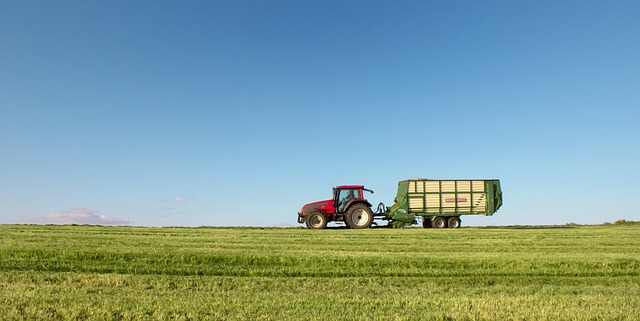Tractors are indispensable tools in modern agriculture, revolutionizing farming practices with their versatility, efficiency, and power. Whether it’s for plowing, planting, or harvesting, tractors play a crucial role in enhancing productivity and profitability on farms. In this article, we’ll explore how tractors can be effectively used in various agricultural tasks.
1. Land Preparation and Tilling
One of the primary uses of tractors is land preparation. Equipped with plows, tractors break up compacted soil, creating a well-aerated environment ideal for seed germination and plant growth. This process not only improves soil structure but also helps control weeds and pests. For optimal results, farmers should choose plows that match their soil type and desired tillage depth.
2. Planting and Seeding
Tractors paired with seeders or planters can significantly enhance planting efficiency. These machines ensure seeds are sown at the correct depth and spacing, maximizing germination rates and crop yields. Modern seeders offer precision planting capabilities, reducing seed waste and optimizing yield. Calibration of the seed drill according to seed type and soil conditions is essential for achieving uniform seed distribution.
3. Fertilizing and Spraying
Tractors equipped with fertilizer spreaders and sprayers can cover large areas quickly and efficiently. These attachments help distribute fertilizers and pesticides evenly, reducing wastage and improving crop health. Using adjustable nozzles on sprayers allows farmers to tailor the application to specific crops and weather conditions, ensuring high precision.
4. Harvesting
Harvesting is another critical task where tractors shine. With attachments like combine harvesters, tractors can efficiently gather crops like wheat, rice, and maize. This not only saves time but also reduces labor costs significantly. Regular maintenance of harvesting equipment is crucial to avoid breakdowns during peak harvest season.
5. Transportation and Towing
Tractors are also used for towing agricultural products, equipment, and raw materials. Their ability to pull heavy loads makes them ideal for transporting harvested crops and supplies across the farm. Proper attachment and even distribution of the load are essential to ensure safety and efficiency.
6. Irrigation
Irrigation is vital for crop growth, and tractors play a key role in powering irrigation systems. They can transport water tanks or power sprinkler systems, ensuring efficient and timely water distribution. Using water-saving irrigation methods like drip or sprinkler systems, powered by tractors, can help conserve water while maximizing crop yield.
7. Weed Management
Weed control is essential for maintaining healthy crops. Tractors equipped with cultivators or rotary tillers can efficiently uproot weeds, making the process more effective than manual weeding. Using crop-specific weed management equipment ensures that crops remain undamaged during the process.
8. Post-Harvest Operations
After harvesting, tractors are used for tasks like threshing and baling. These operations help prepare the land for the next planting season and manage crop residues efficiently. Tractor balers can compact residues for storage or sale, further optimizing farm operations.
Tips for Enhancing Farming with Tractors
To maximize the benefits of tractors in agriculture, consider the following tips:
-
Select the Right Tractor: Choose a tractor based on farm size, soil type, and primary tasks.
-
Invest in Modern Implements: Precision seed drills, laser-guided levellers, and automated sprayers can significantly boost productivity.
-
Regular Maintenance: Keep tractors in optimal condition by regularly checking engine oil, hydraulic systems, and tires.
-
Train Operators: Proper training ensures efficient operation and reduces wear and tear on equipment.
-
Leverage Technology: Use GPS and telematics to enhance tractor management and precision.
-
Optimize Fuel Usage: Run tractors at optimal speeds and avoid overloading to reduce fuel consumption.
-
Implement Rotation: Rotate tractor implements according to crop cycles to reduce wear and optimize usage.
-
Monitor Soil Health: Regularly check soil health to avoid compaction and ensure optimal growing conditions.
-
Adapt to Weather: Plan farming activities based on weather forecasts to avoid soil compaction and equipment damage.
-
Seasonal Planning: Align tractor activities with the farming calendar to maximize productivity and reduce delays.
Tractors are extremely useful
Tractors are essential tools in modern agriculture, offering versatility, efficiency, and power to handle a wide range of tasks. By understanding their applications and adopting best practices, farmers can significantly enhance productivity, sustainability, and profitability. As tractor technology continues to evolve, the future of agriculture looks promising.

